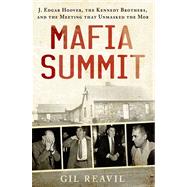
GIL REAVILL is an author, screenwriter, and playwright. His work has been widely featured in magazines and he is the author of Aftermath, Inc.: Cleaning Up After CSI Goes Home. Reavill co-authored Beyond All Reason: My Life With Susan Smith and the screenplay that became the 2006 film Dirty, starring Cuba Gooding, Jr. He lives in Westchester County, New York with his wife, Jean Zimmerman, and their daughter.
The New copy of this book will include any supplemental materials advertised. Please check the title of the book to determine if it should include any access cards, study guides, lab manuals, CDs, etc.
The Used, Rental and eBook copies of this book are not guaranteed to include any supplemental materials. Typically, only the book itself is included. This is true even if the title states it includes any access cards, study guides, lab manuals, CDs, etc.